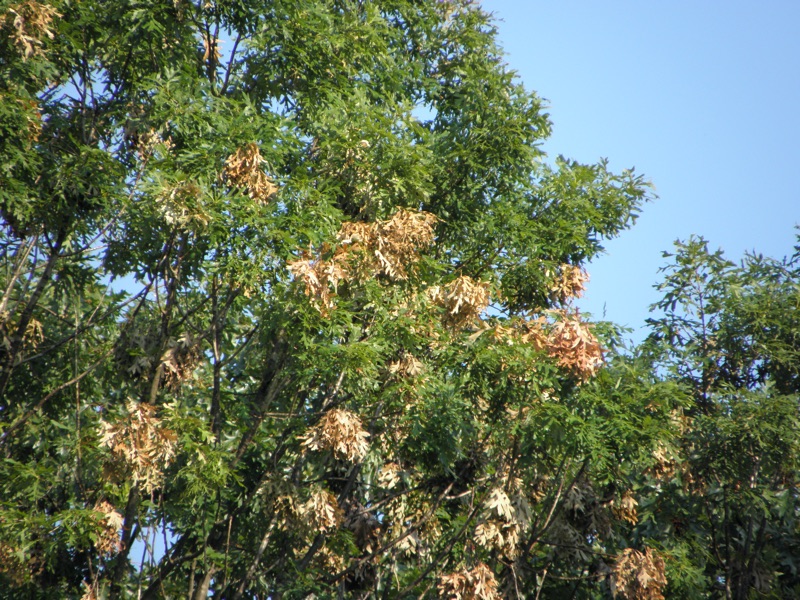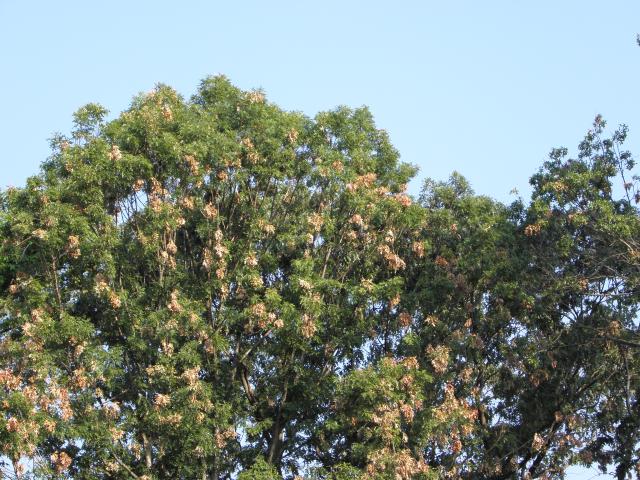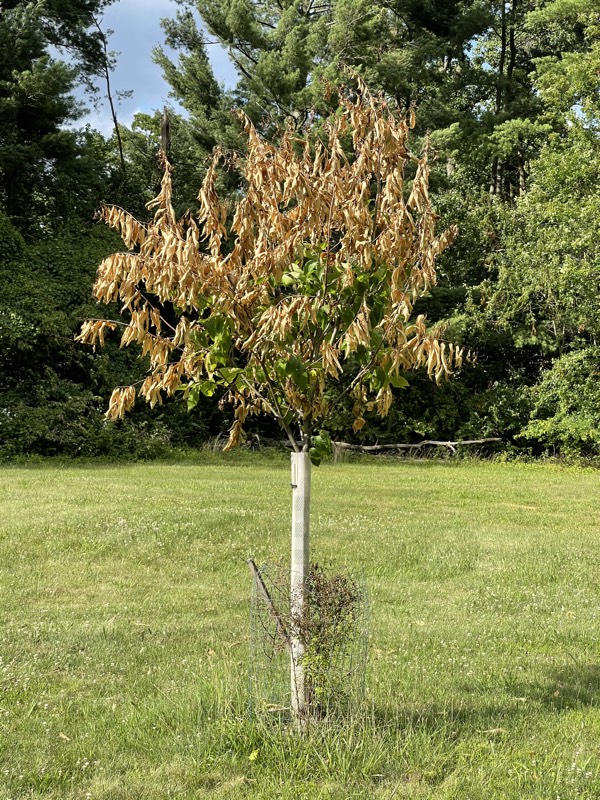A photo of cicadas mating by Christina T.

A photo of cicadas mating by Christina T.

Here’s a picture of two Magicicada mating from Michael Fiorenzo. Photos taken in LaGrange.

Update (5/4/2024) Here is a link to a video on Twitter/X from the Chicago Botanical Gardens featuring the Garden’s plant healthcare supervisor, Tom Tiddens. He shows us how to net a tree to protect it from cicada egg laying.
As you may have heard, cicadas can damage trees, particularly young or ornamental trees, as they oviposit their eggs in branches. The damage to individual branches is often permanent, and in some cases the entire plant is lost. Native species of trees, like oak and maples, fare much better against cicadas because they have co-evolved for hundreds of centuries. Young trees and weaker non-native ornamentals, imported from outside the United States, fare a lot worse.
Female cicadas use their ovipositor to carve egg nests (egg grooves, punctures, baby cicada cribs) into the bark of tree branches:

Here is an illustration of the egg nests (baby cicada cribs):

Mature trees will receive some damage, but they recover. When branches are damaged they die and their leaves turn brown, which is called flagging:


Check out these articles on Flagging:
Netting and tree protection tips:
Netting can be effective for keeping cicadas off branches, or on branches, as in the case of this video below where cicada researcher John Cooley had collected many cicadas and wanted to keep them for later. This video is proof that they cannot get through netting:
In my personal experience, which includes two Brood II emergence in my yard, I have seen plenty of flagging, but no death of a tree or shrub. That said, I do not have many small or ornamental trees. I have a 15′ dogwood, azaleas and rhododendrons.
Case study from 2021-2023:
Here’s a small (less than 10 feet) tree that experienced a lot of flagging during Brood X in 2021:

Here is the same tree in May of 2023:

The tree can be found at the Princeton Battlefield Monument park, and if can be seen on Google maps.
George Dalidakis emailed us this fantastic series of a Green Grocer cicadas (Cyclochila australasiae) emerging from its nymph exoskeleton (molting).